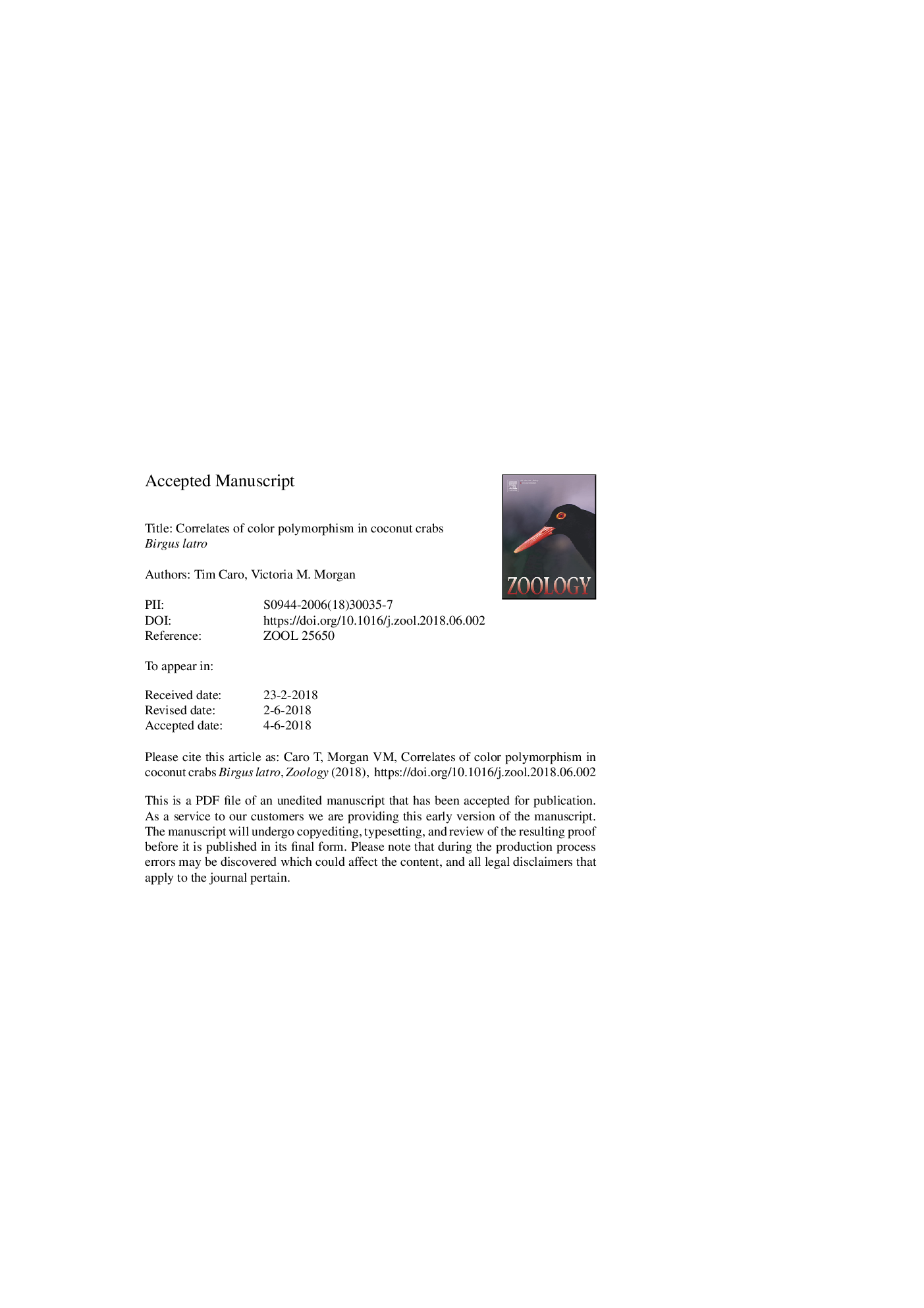| Article ID | Journal | Published Year | Pages | File Type |
|---|---|---|---|---|
| 8626910 | Zoology | 2018 | 44 Pages |
Abstract
Color polymorphisms are widespread in nature and can be maintained by several evolutionary processes. We used the coconut crab (Birgus latro) red/blue color polymorphism as a test case to explore the functional significance of intraspecific variation in crab coloration. Across our study sites on Pemba and Chumbe Islands, Tanzania, and Christmas Island, Australian Territory, red:blue morph ratios were 76.5%, 66.7% and 72.0% respectively, or approximately 3:1 in each case. To investigate whether coloration is sex or size dependent, signals strength or behavior, or is a physiological pleiotropic effect, we measured body weights, linear dimensions, pinch-force, behavioral dispositions and took crude environmental variables in the field. Except for a slight tendency for red crabs to be found in more open situations, we found no differences between color morphs for any of these variables. Other factors associated with color polymorphisms in other species, including frequency-dependent predation seems unlikely in such a large species with few natural predators, while niche separation in space seems improbable as morphs are typically found together. Assortative mating is plausible but mating is rapid, suggesting little choice is involved. Our findings suggest that neither morphological nor behavioral factors can explain color polymorphism in this species and that explanations must be found elsewhere.
Related Topics
Life Sciences
Agricultural and Biological Sciences
Animal Science and Zoology
Authors
Tim Caro, Victoria M. Morgan,
